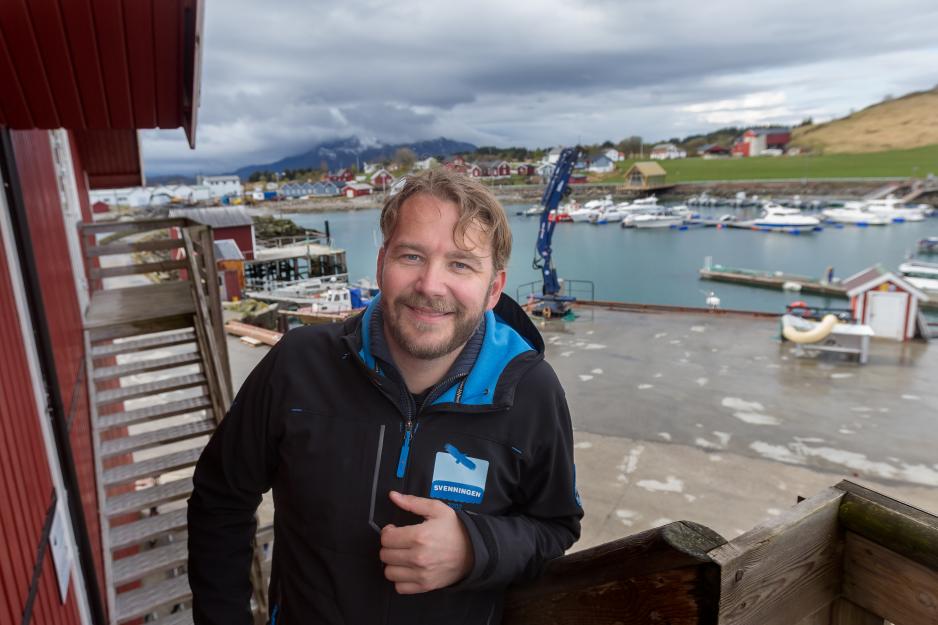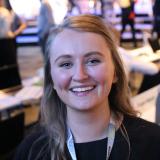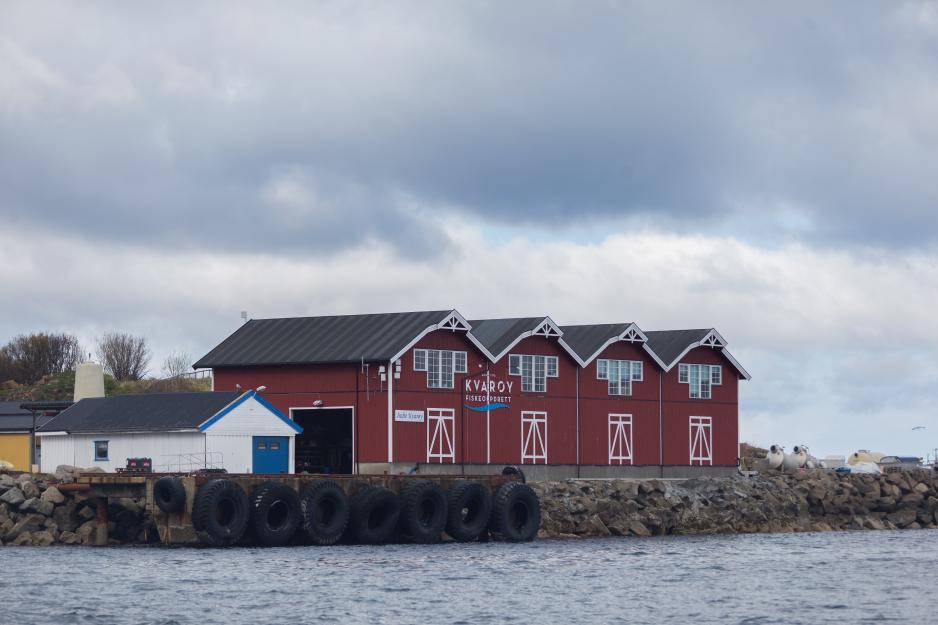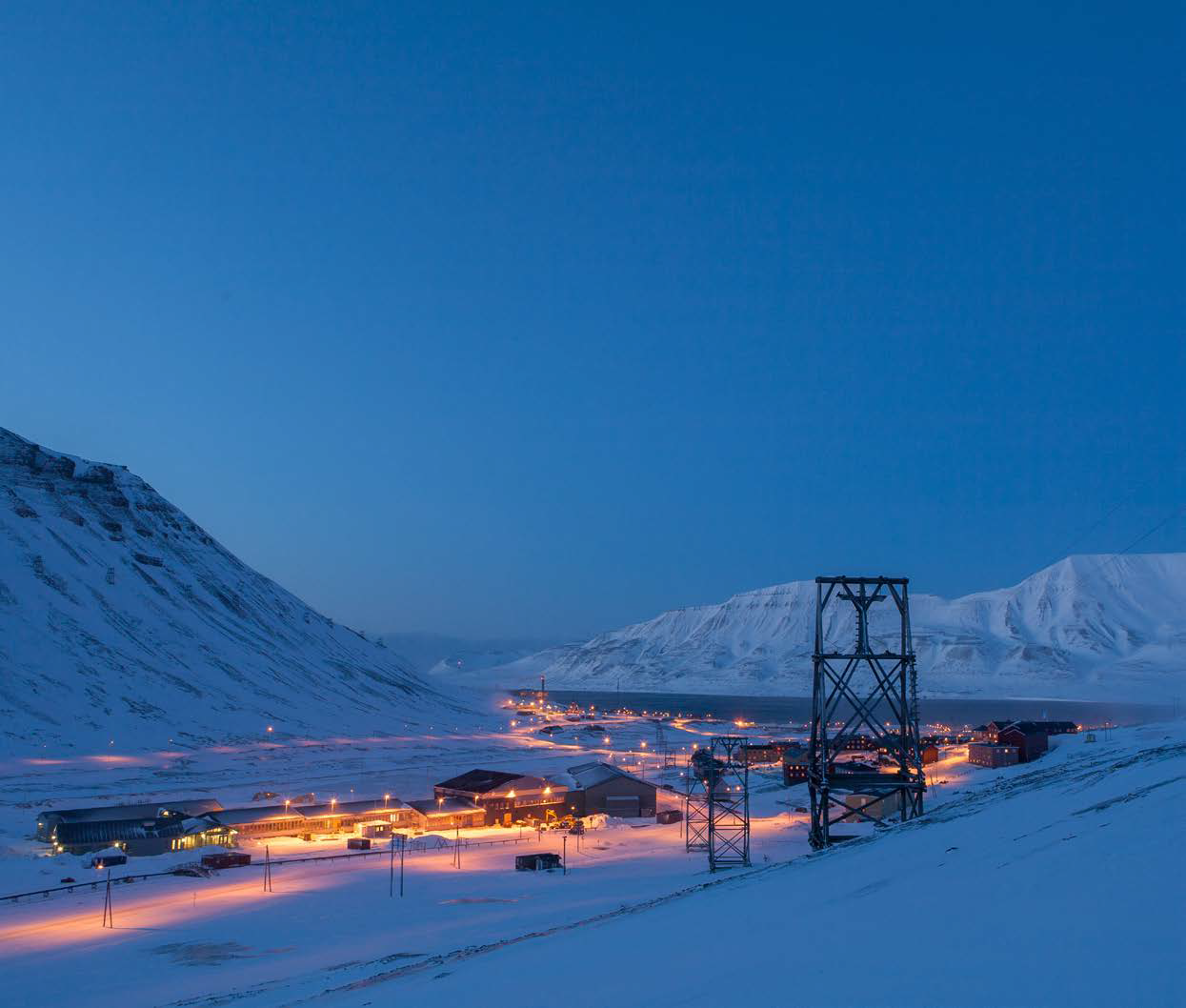Salmon Adventure Across the Ocean
On a small island with only 100 inhabitants, just by the Arctic Circle, you can find the origins of a long-lasting salmon adventure. With increasing growth and new customers, the family of Kvarøy has taken a series of measures to achieve more sustainable salmon farming.
Kvarøy Fiskeoppdrett is a family-owned company located at Kvarøy, a small island with some 100 inhabitants. You find the family jewel right between breathtaking nature and the wide-open ocean.
The Olsen family has farmed salmon here since 1976. Today, they manage six licenses and have a staff of 23. The company has more than doubled its turnover since 2015 and is currently doing rather well in the United States. And their aiming for the USA rather than other parts of the world is not a random choice. The USA is where their company stands out from the crowd.
New man, new eyes
Alf-Gøran Knutsen is Manager at Kvarøy fish farming. He is a teacher by education and did not grow up on the island, but moved there. For a long time, he has been concerned with finding out how they could produce salmon in an even better way. The company stopped using chemicals for treating lice early on, produces its own fish food in which they use as little fish as possible for producing fish, and they also early quit using Brazilian soy in their fish food. Without these early measures, Knutsen is not sure they would have fared as well.
“We decided early on to make our own recipe for fish food, one focusing on the things we believe to be important. Amongst others, we wanted to produce as much fish as possible with the least use of fish as possible. For every half kilogram of fish that we produce, we receive one kilogram, much thanks to seaweed oil. We also stopped using Brazilian soy rather early on. We add krill to our fish food and have twice as much Omega 3 in our salmon as there is in a regular farmed salmon. A lot of things distinguish us from other producers”, Alf-Gøran Knutsen says.

Alf-Gøran Knutsen of Kvarøy Fiskeoppdrett [Fish farmers]. Photo: TV2
“If you are satisfied with everything you do, you lose your motivation. I wanted to come in and saw that there were things we could do better. Working on that has resulted in our current position”, he continues.
New market, other expectations
In 2012 the company started chasing the American dream. Through Whole Foods and Blue Circle, they were able to start selling their salmon in the USA. While Blue Circle buys fish from several actors, Whole Foods connect producers with customers. Now, however, Kvarøy has decided to focus even more and has left Blue Circle. Instead, they use their own name as their brand and uses Whole Foods to link them with their customers.
“We are very lucky with our relationship with Whole Foods. Without the new agreement, it sould have been hard to take on the costs of the new brand and bringing it to the American market.”
“It has, of course, been a lot more work; there’s hardly any doubt about that. However, it is also very rewarding to receive direct feedback on the product from our customers.”
In order to enter the American market, a series of criteria need to be met. That makes Kvarøy set goals for itself and follow standards that not necessarily everybody else do. Amongst others, Whole Foods has its own standards, and Kvarøy is one out of three companies world wide that meet the requirements of that specific standard.
“It has been a long way, with a different culture and a different way of doing things. So in a way, we have had to learn along the way.”
Good advisors make things easier
It has, of course, been a lot more work; there’s hardly any doubt about that
“As long as you have the right people and advisors onboard, anything is possible. I believe some would regard what we have done as fairly impossible, but it is not that hard. The only limit is what you want to achieve”, he continues.
Block chain technology
While they have adjusted their fish food, changed their cleaning habits, medication, and much else, they are not afraid to start implementing new technology. In order to learn more about the traceability of the fish, they have worked with block chain technology.
“In foodstuff and fish in general, there is a lot of cheating going on, and many products are sold off as something that they are not. That is why there is increasing focus on traceability and documentation. Blockchain is a great tool for creating a secure chain with data that provides the customer with the security that what they buy is actually what it is.”
And even if salmon is not the most exposed product when it comes to cheating, the desire for information is nevertheless big in the USA. That is why Kvarøy continues to look into what opportunities tracing can provide and how exact their information out to the customers can be.
“Salmon is not necessarily that exposed to cheating; however, when you have your own salmon that is produced in its very unique way, it is important for us to ensure that those who buy Kvarøylaks actually get just that. We are currently working with blockchain fresh insight, which will provide the customer with a unique QR code that gives him or her information about the product. It even says where the fish comes from”, he continues.
As long as you have the right people and advisors onboard, anything is possible
About block chains
- Block cha in is a kind of accounting that traces all the data of a product or a service
- The web site tek.no explains it as a chain of blocks in which each block consists of information
- One block is based on the previous block, which is based on the one before that, before it can all be traced back to an original block.
- Information can thus always be traced all the way to the origins.
- The point is for this information to be publicly available and impossible for anyone to alter at a later stage
Source: Fiskeribladet
More trust from Norwegians
Knutsen believes that strict regulations and laws related to production of food has made Norwegians trust producers more. While we trust that the fish on our table is as it should be, the story is quite different for Americans. Fish smuggling, different priorities in the various states and other requirements for the producers can make it hard to know what you are left with in the end.
“Perhaps we trust producers more in Norway. We trust those who produce our meat, whereas in the USA, you cannot always be sure about what ends up on your dinner table.”
“There is quite much more focus on the things that make us stand out than what is the case in the rest of the world. It is all about data, traceability, about knowing what you eat. This emphasis is much of the reason why we succeed there rather than elsewhere. They place higher demands on producers.”
What are your future plans?
“We cannot produce more fish without using large sums through auctions, so we do not plan on producing more. However, we do have plans about building on what we have started. We are to be a unique salmon producer and to be the most future-oriented one. Along with our customers, we will take the measures we have to for the industry to become more legitimate. It is not secret that we who operate in the fish farming industry have some challenges, however, these challenges can be solved if you have customers who see the value in it”, he says in closing.
It is no secret that we who operate in the fish farming industry face some challenges; however, these challenges can be solved if you have customers who see the value in it
This article was originally published in Norwegian and has been translated by HNN's Elisabeth Bergquist.



